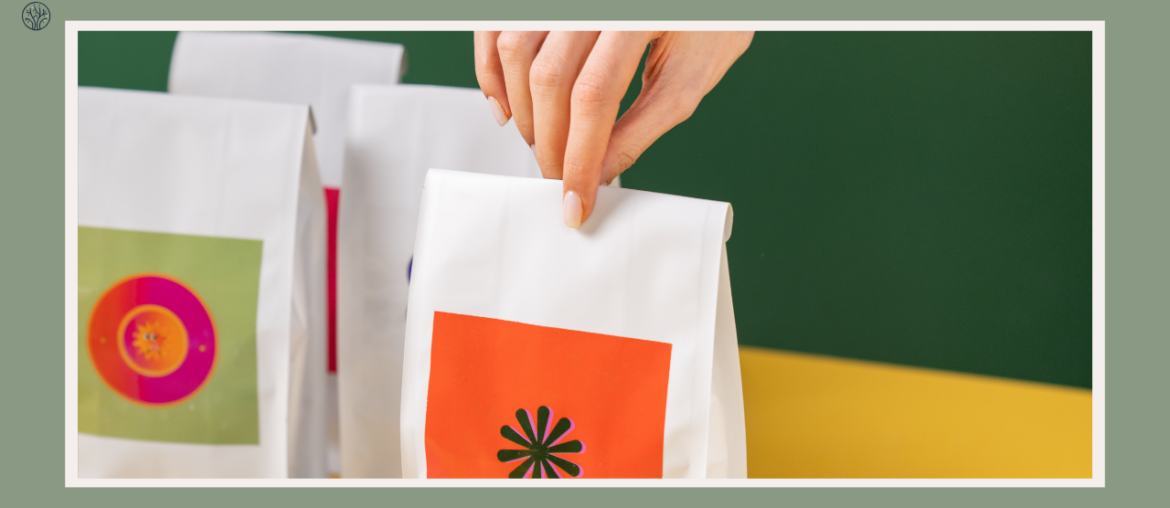Every grocery shopping we do is full of plastic bags and wrappers. But that does not mean we cannot make eco-friendly choices when we shop.
For responsible shoppers, here are some tips on how to grocery shop sustainably.
How To Plan A Sustainable Meal
Our eating habits have a direct impact on our shopping choices. If we consume foods that are not sustainable, we are more likely to purchase those products. Therefore, the first step to shop sustainably is to change what we eat and that begins with planning a sustainable meal.
1. Choose Plant-Based Foods
Eating more vegetables is not only good for your health, but also for the environment. How so? A study shows that plant-based diets can reduce greenhouse gas emissions by almost 50%, save up to 30% of energy in production, and have a much lower carbon footprint than meat-based diets.
However, this tip is not for everyone, as you also have to consider your health and what your body needs. Don’t switch to a plant-based diet abruptly, as your body might not adapt well to the change. Instead, go for a gradual approach and slowly increase your vegetable intake and decrease the amount of meat you eat. This way, you can still enjoy the benefits of a plant-based diet without compromising your well-being.
2. Buy Organic And Fair-Trade Foods
Don’t fall into the trap of “Green” or “All Natural” labels on the packaging. These are just marketing words to make the products seem “eco-friendly”, but they are often not. To buy real organic and fair-trade foods, you must learn to read the labels on the food.
Here are a few common food labels and what they mean:
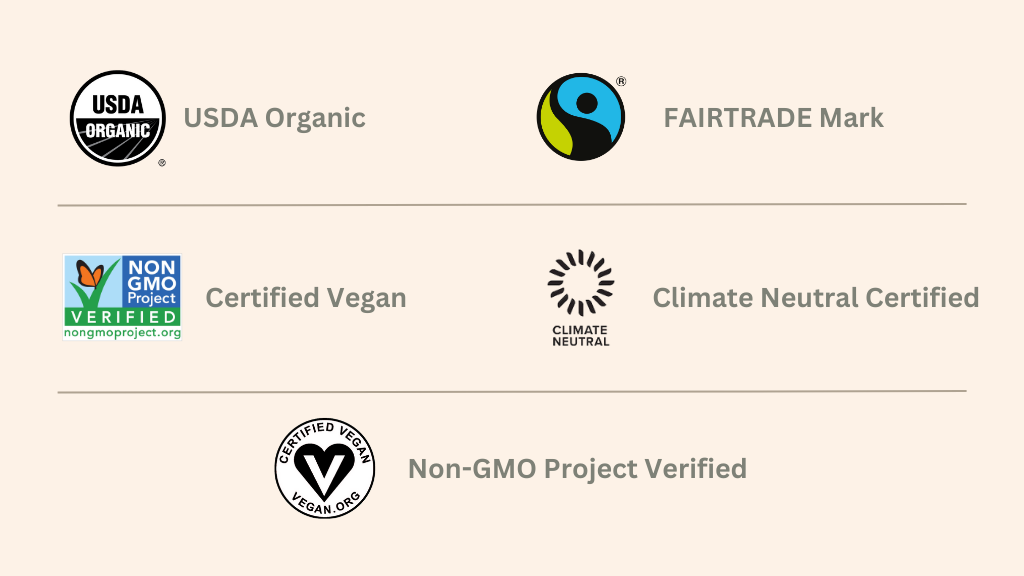
USDA Organic: This means that the land and soil used for farming are free of synthetic chemicals, the crops are not genetically modified, the animals are fed organic feed, and more.
Non-GMO Project Verified: The product and its ingredients are not genetically engineered or contain genetically modified organisms. The product passes a rigorous testing process by an independent third-party system every year to ensure its non-GMO status.
Certified Vegan: The product does not contain any animal products or byproducts and is not tested on animals.
FAIRTRADE Mark: The product meets the social, economic, and environmental standards of Fairtrade International. This means that the farmers and workers who produce the product are paid fairly, have decent working conditions, and protect the environment.
Climate Neutral Certified: The company that makes the product takes responsibility for its carbon emissions. This means that the company measures and offsets its greenhouse gas emissions by investing in projects that reduce or remove carbon from the atmosphere, such as clean energy and reforestation.
3. Choose Seasonal Foods
This tip goes hand in hand with the previous tip of Shopping Locally. When you shop locally, look for in-season foods, especially seafood. Buying seafood in season allows them to have a window to reproduce and also helps reduce overfishing and maintain a healthy marine environment.
How To Reduce Waste When Grocery Shopping
One of the main challenges of sustainable grocery shopping is avoiding food waste. According to the World Food Programme, about one-third of the food produced for human consumption is lost or wasted every year. To not waste your food, here’s what you need to do:
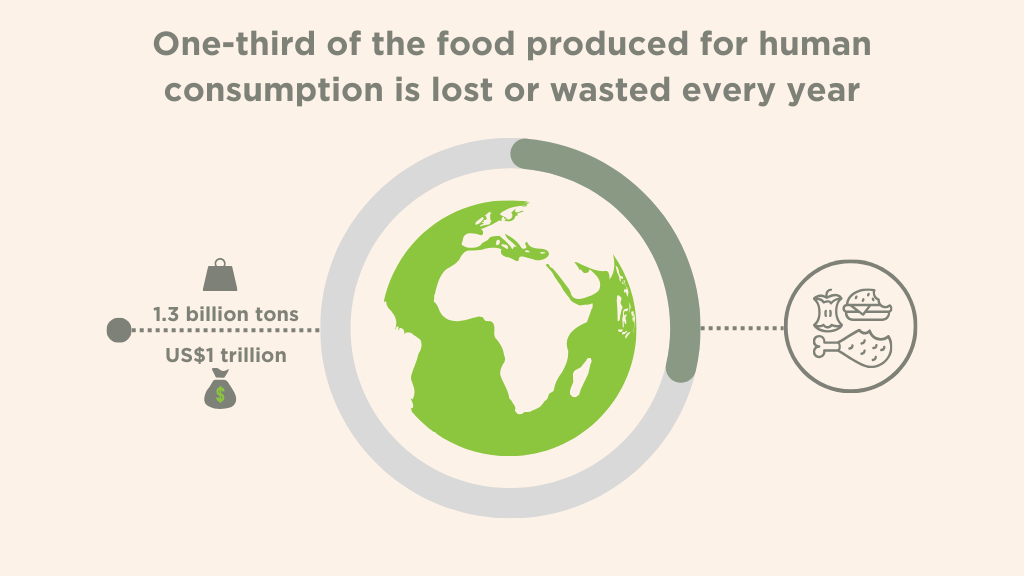
4. Plan Your Meals
As mentioned earlier, planning your meals is essential for building good shopping habits. By doing this, you will avoid browsing through the aisles without a clear idea of what you need. This way, you will not buy things that you will not use or eat. By planning ahead, you will also be more mindful about what you buy and what you eat, which will eventually lead to other good habits.
5. Buy In Bulk
Buying in bulk is one of the best ways to reduce your waste and carbon footprint, as we mentioned in our previous blog on How to Start Zero Waste. You can save money and time by buying larger quantities of items that you use frequently, and avoid the excessive single-use containers that come with smaller packages.
6. Store Your Food
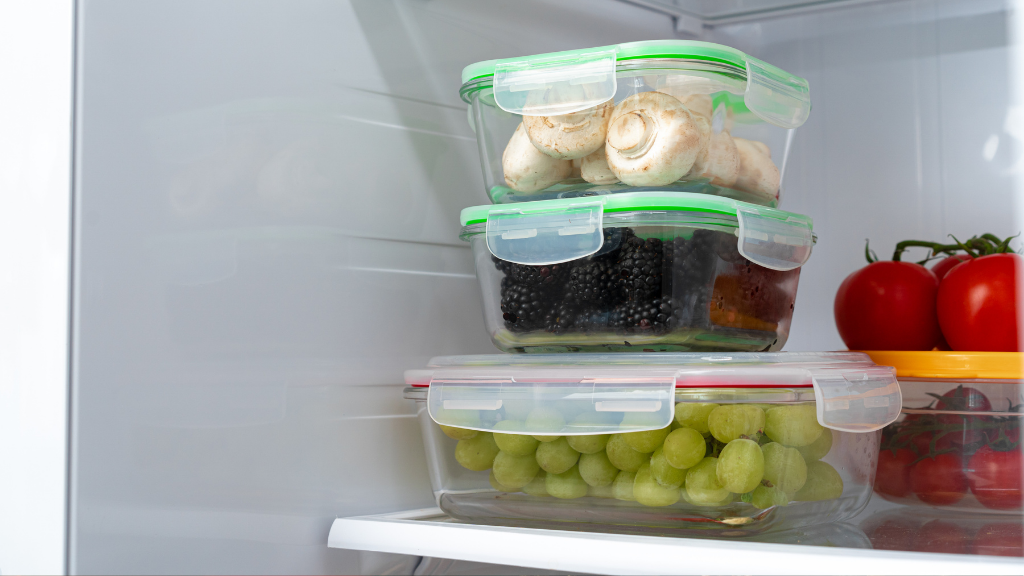
Storing your food properly is also an important part of reducing waste because it affects how often you need to go grocery shopping and how much you need to buy each time. However, many people tend to overlook this aspect of the grocery cycle and focus only on the shopping part. Knowing how to store your food can help you preserve its freshness and quality, and prevent it from spoiling or going bad.
7. Compost Your Food Scraps
A clever way to reduce your waste is to turn it into compost. This tip is ideal if you have a garden or plants around the house because the organic compost will nourish your plants. But what if you don’t have any space for composting? Don’t worry, you can still look for local composting programs or facilities in your area and drop off your food scraps there.
How To Buy Groceries Without Plastic
Plastic is everywhere when it comes to grocery shopping, from the packaging of the products to the bags that carry them. However, there are still many ways to avoid or reduce plastic use when we shop for groceries.
8. Bring Your Bags
One of the easiest ways to cut down on plastic bags is to bring your own reusable bags. It can either be a tote bag, or a canvas shopping bag as long as it has enough room to put all your groceries. They can be tote bags, canvas bags, or any other type of bag that can hold your groceries.
9. Use Your Containers
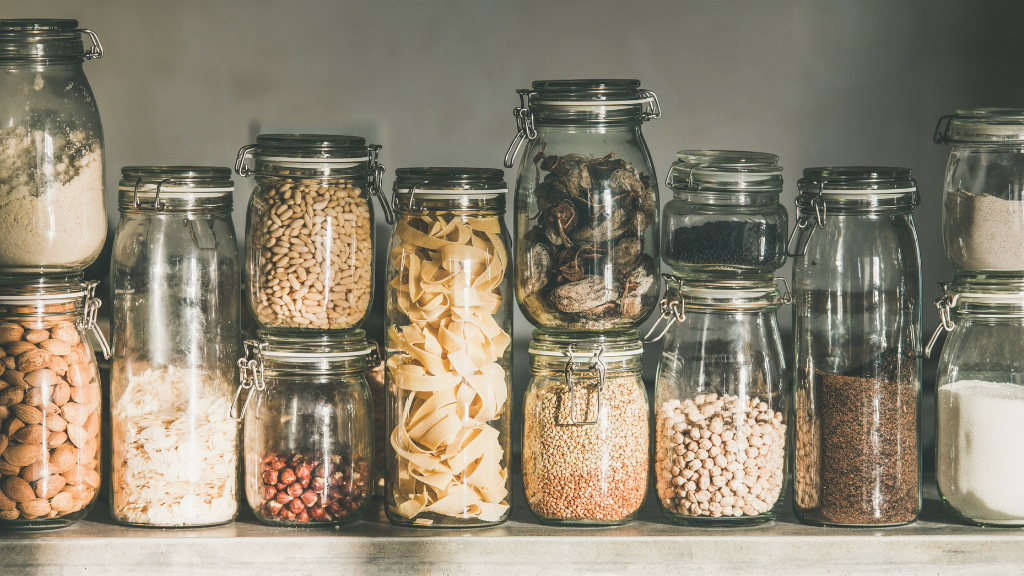
Another way to avoid plastic containers is to bring your own containers, such as jars or bottles, and ask the staff to fill them with dry goods or liquids. You will, therefore, use less single-use plastic containers that often end up in the trash.
You can also reuse your containers for other things, such as storing your leftovers or making your own jams. There are also zero-waste stores that even encourage you to bring your own containers.
10. Shop Locally
Shopping locally is a great way to be sustainable and support your community. On one hand, you can get access to fresh seasonal food that does not have any preservatives or packaging. On the other hand, shopping locally means that the store is closer to you, so you can save on gas and reduce your carbon footprint by traveling shorter distances.
11. Know What To Avoid
If you have no other choice but to buy items with plastic packaging, don’t give up just yet. Not all plastics are equally bad, as some can be reused and recycled more easily than others. Here are the 7 commonly found plastic types:
- Polystyrene (PS)
- Polypropylene (PP)
- Polyvinyl chloride (PVC)
- High-density polyethylene (HDPE)
- Low-density polyethylene (LDPE)
- Polyethylene terephthalate (PETE)
- All other plastics, including acrylic and nylon
The two plastic types highlighted on the list: HDPE and PETE are more likely to be collected and recycled than the others. By choosing them you are also helping to reduce the amount of plastic waste on the planet.
Conclusion
Small actions add up over time and one good habit can lead to other good habits. We hope that after reading this article, you will adopt these sustainable grocery shopping tips and start living your best life and doing the best for the planet.
Want to also feel good about your online shopping habit? Let’s shop sustainably with Tenere, where your purchases can bring the green back to our planet.

